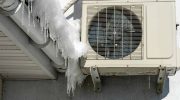
What is SEER?
When it comes to home cooling systems, one aspect that many homeowners may not fully understand is the SEER rating. SEER, which stands for Seasonal Energy Efficiency Ratio, is a metric used to measure the energy efficiency of air conditioners and heat pumps. But what does this rating really mean and why is it important?
To put it simply, the SEER rating is an interpretation of the cooling efficiency of an HVAC system over a typical cooling season. It provides an overview of how much cooling output the system provides for each unit of energy it consumes. The higher the SEER rating, the more efficiently the system operates, resulting in lower energy consumption and utility bills.
An explanation of the SEER rating can be thought of as a way to quantify the energy efficiency of a cooling system. By comparing SEER ratings of different systems, homeowners can make informed decisions when purchasing or upgrading their HVAC equipment. Additionally, understanding the SEER rating can also help homeowners qualify for incentives and rebates offered by utility companies or government programs that promote energy efficiency.
Overall, the SEER rating provides an exposition of the energy efficiency of a cooling system, allowing homeowners to make educated choices that benefit both their wallets and the environment. By opting for a system with a higher SEER rating, homeowners can enjoy a more comfortable living space while reducing their energy consumption and minimizing their carbon footprint.
What is SEER?
SEER stands for Seasonal Energy Efficiency Ratio. It is an industry-standard rating that measures the efficiency of air conditioning and heat pump systems. SEER ratings provide an overview of the energy efficiency of these systems and help consumers make informed decisions when purchasing a new HVAC system.
The SEER rating is calculated by dividing the total cooling output of the system over a typical cooling season by the total electrical energy input during the same period. The higher the SEER rating, the more energy efficient the system is, meaning it can provide the same level of cooling while using less electricity.
SEER ratings are used to compare the efficiency of different air conditioning and heat pump systems. Higher SEER ratings usually indicate more advanced and efficient cooling technology, which can result in lower energy bills and reduced environmental impact.
SEER ratings are important because they can help homeowners and businesses save money on their energy bills. By choosing a system with a higher SEER rating, consumers can lower their energy consumption, ultimately reducing their carbon footprint and contributing to a more sustainable future.
It is important to note that SEER ratings may vary depending on factors such as climate, unit size, and usage patterns. Therefore, it is recommended to consult with a qualified HVAC professional to determine the appropriate SEER rating for your specific needs.
In summary, SEER is an industry-standard rating that measures the energy efficiency of air conditioning and heat pump systems. It provides consumers with an explanation of the system’s efficiency and helps them make informed decisions when purchasing an HVAC system. Choosing a higher SEER-rated system can lead to lower energy bills and a reduced environmental impact.
How is SEER calculated?
SEER, or Seasonal Energy Efficiency Ratio, is a measure of the cooling efficiency of an air conditioning system. It is calculated by dividing the cooling output of the air conditioner during a typical cooling season by the energy input in watt-hours. This calculation provides an overall efficiency rating for the system.
SEER is determined based on a specific set of conditions defined by the Air Conditioning, Heating, and Refrigeration Institute (AHRI). These conditions include an indoor temperature of 80 degrees Fahrenheit (27 degrees Celsius) and an outdoor temperature of 95 degrees Fahrenheit (35 degrees Celsius).
The SEER value is expressed as a ratio. The higher the SEER rating, the more energy-efficient the air conditioning system is. For example, a system with a SEER rating of 16 is more energy-efficient than a system with a SEER rating of 12.
The calculation of SEER takes into account various factors that affect the efficiency of an air conditioner, such as the compressor type, fan speed, and coil design. It provides consumers with a standardized measure to compare the efficiency of different air conditioning systems.
SEER is an important metric for homeowners who want to reduce their energy consumption and lower their utility bills. A higher SEER rating can result in significant energy savings over the lifetime of an air conditioning system. Additionally, many local governments and utility companies offer incentives and rebates for the purchase of high SEER rated systems.
Importance of SEER
The SEER rating, which stands for Seasonal Energy Efficiency Ratio, is a crucial metric in evaluating the energy efficiency of air conditioning systems. It provides a standardized measure of how efficiently an HVAC system will operate over an entire cooling season. Understanding the importance of SEER can help consumers make informed decisions when selecting an air conditioning unit.
The meaning of SEER can be further understood through its exposition. SEER is defined as the total cooling output of an air conditioner during a typical cooling season, divided by the total electrical energy input during the same period. This definition provides a clear elucidation of what the SEER rating represents.
The interpretation of SEER allows consumers to gauge the efficiency of different air conditioning systems and compare their energy performance. Higher SEER ratings generally indicate more energy-efficient units, which can yield significant benefits in terms of energy savings and reduced utility costs over time.
The explanation of SEER extends beyond just energy savings. By investing in a system with a higher SEER rating, consumers can also enjoy increased comfort. Air conditioners with higher SEER ratings tend to have advanced features such as variable-speed compressors and superior temperature control, resulting in a more consistent and comfortable indoor environment.
To provide consumers with more detailed information, SEER ratings are often displayed in recommended efficiency charts. These charts may include a range of SEER ratings and corresponding energy savings, allowing consumers to evaluate the potential benefits of upgrading to a higher SEER system.
Overall, understanding the importance of SEER is essential for making informed decisions when purchasing an air conditioning unit. By choosing a system with a higher SEER rating, consumers can benefit from improved energy efficiency, reduced utility costs, and increased comfort in their homes or businesses.
Benefits of Higher SEER Ratings
SEER meaning:
SEER stands for Seasonal Energy Efficiency Ratio. It is a rating that measures the efficiency of air conditioners and heat pumps. A higher SEER rating indicates a more energy-efficient system, as it can cool or heat a space with less energy consumption.
Exposition, Elucidation, Overview, Explanation, Interpretation:
Understanding the benefits of higher SEER ratings is crucial when making decisions about air conditioning systems. Here are some key advantages:
-
Energy savings:
A higher SEER rating means lower energy consumption, resulting in significant cost savings on utility bills. By investing in an air conditioner with a higher SEER rating, homeowners can reduce their energy expenses and minimize their environmental impact.
-
Improved comfort:
Higher SEER-rated systems can provide better temperature control and enhanced air quality. They can maintain consistent, comfortable cooling throughout the space, eliminating temperature fluctuations and excessive humidity levels.
-
Long-term cost benefits:
While air conditioning units with higher SEER ratings may have higher upfront costs, they often provide long-term cost benefits. The energy savings and reduced maintenance requirements can offset the initial investment over time.
-
Environmental friendliness:
Higher SEER-rated systems consume less energy, which means they emit fewer greenhouse gases and reduce the overall carbon footprint. By choosing a system with a high SEER rating, individuals can contribute to a more sustainable environment.
-
Potential incentives:
In some areas, there are government or utility company incentives for installing air conditioning systems with higher SEER ratings. These incentives could include rebates, tax credits, or other financial benefits that can further offset the initial investment.
In conclusion, opting for air conditioning systems with higher SEER ratings provides numerous benefits, such as energy savings, improved comfort, long-term cost benefits, environmental friendliness, and potential incentives. It is essential to consider these advantages when selecting an air conditioning system for both residential and commercial applications.
Lower Energy Costs
A central factor to understand in energy efficiency is the importance of lower energy costs. The SEER rating, which stands for Seasonal Energy Efficiency Ratio, provides valuable insights into the energy performance and efficiency of cooling equipment, particularly air conditioners. A higher SEER rating indicates better energy efficiency and lower energy costs.
The meaning behind the SEER rating can be explained through its exposition as a measure of the cooling output during a typical cooling season divided by the total electric energy input during the same period. By interpreting this ratio, consumers can better understand the energy efficiency and potential cost savings of different cooling systems.
The explanation of SEER further illuminates its significance in relation to energy consumption and environmental impact. A higher SEER rating implies that the cooling system utilizes energy more efficiently, resulting in decreased electricity usage and lower energy costs. This makes it an important factor to consider when selecting an air conditioner or heat pump, as it can greatly impact long-term energy expenses.
By providing an elucidation of the SEER rating, consumers can make informed decisions about their cooling systems. Understanding the definition of SEER allows individuals to prioritize energy efficiency and take advantage of the potential benefits it offers. This includes not only lower energy costs, but also reduced carbon emissions and a smaller ecological footprint.
When comparing different cooling options, it is beneficial to consult a table or comparison chart that displays the SEER ratings of various models. This can help users prioritize energy efficiency and choose a system that aligns with their energy-saving goals. Looking at SEER ratings and considering their implications can help consumers save money on energy bills while contributing to a more sustainable future.
- Key takeaways:
- The SEER rating measures the energy efficiency of cooling systems.
- A higher SEER rating indicates better energy efficiency and lower energy costs.
- Understanding the SEER rating allows consumers to make informed decisions about cooling equipment.
- Consulting comparison charts can help users prioritize energy efficiency when selecting a cooling system.
Reduced Environmental Impact
In the overview of SEER, it is important to understand the reduced environmental impact associated with this energy efficiency rating. SEER, or Seasonal Energy Efficiency Ratio, is a metric used to measure the energy efficiency of air conditioning systems. It provides a definition and meaning to the energy efficiency performance of these systems, offering an important tool for consumers and manufacturers alike.
The reduced environmental impact of SEER-rated air conditioning systems can be attributed to their higher energy efficiency. These systems are designed to consume less electricity while providing the same level of cooling or heating as less efficient systems. This means that SEER-rated systems can achieve the desired indoor temperature while reducing energy consumption, which ultimately leads to a lower carbon footprint.
SEER offers an exposition and elucidation of the energy efficiency capabilities of air conditioning systems. By interpreting the SEER rating, consumers can make informed decisions about which systems to purchase. Higher SEER ratings indicate more energy-efficient systems, meaning lower energy consumption and reduced impact on the environment.
The interpretation of SEER ratings allows consumers to prioritize sustainable products and reduce their energy usage. By choosing air conditioning systems with higher SEER ratings, consumers can actively contribute to environmental conservation efforts. This is particularly important considering the increasing demand for cooling and heating in residential and commercial buildings, which puts a strain on energy resources.
SEER ratings are typically displayed on energy labels and product specifications, making it easy for consumers to compare different systems. The use of SEER as a standardized metric ensures that consumers can make informed decisions based on the energy efficiency performance of air conditioning systems. Manufacturers also benefit from this clarity, as they can market their more efficient products and showcase their commitment to reducing environmental impact.
- Reducing energy consumption: SEER-rated systems consume less electricity, resulting in reduced overall energy consumption.
- Lower carbon footprint: By using less energy, SEER-rated systems contribute to the reduction of greenhouse gas emissions and environmental pollution.
- Sustainable purchasing decisions: Consumers can prioritize air conditioning systems with higher SEER ratings, supporting more sustainable practices.
- Conservation of energy resources: As the demand for cooling and heating increases, energy-efficient systems help conserve valuable energy resources.
- Clarity and transparency: SEER ratings provide a standardized metric that allows for easy comparison of different air conditioning systems.
In conclusion, the reduced environmental impact of SEER-rated air conditioning systems is a significant benefit of this energy efficiency rating. The definition and meaning provided by SEER allow consumers to make informed decisions and contribute to environmental conservation efforts, while manufacturers can showcase their commitment to sustainability.
Improved Comfort
The SEER rating is an important factor to consider when choosing a heating and cooling system for your home. It provides an explanation of how efficiently the system operates and the level of comfort it can provide. Understanding the SEER rating can help homeowners make informed decisions about their HVAC systems.
The SEER rating, or Seasonal Energy Efficiency Ratio, is a numerical value that represents the cooling output of an air conditioning system divided by the electrical power input. In simpler terms, it is a measure of how efficiently an air conditioner or heat pump can cool your home.
The higher the SEER rating, the more efficient the system is. A higher SEER rating means that the system can deliver more cooling power for every unit of electricity consumed. This translates to improved comfort in your home, as the system can cool your space quickly and effectively.
With a higher SEER rating, you can enjoy a more consistent and comfortable indoor temperature. The system will be able to maintain the desired temperature more efficiently, resulting in fewer temperature fluctuations and an overall better experience. This is especially important during those hot summer months when the temperature can soar.
In addition to improved comfort, a higher SEER rating can also provide other benefits such as lower energy bills. By choosing a more efficient system, you can reduce your energy consumption and save money on your monthly utility bills.
It’s important to note that the SEER rating is just one factor to consider when choosing a heating and cooling system. Other factors such as the size of your space, climate conditions, and your specific needs should also be taken into account.
In conclusion, the SEER rating provides an interpretation of how efficiently a heating and cooling system can cool your home. A higher SEER rating means improved comfort, lower energy consumption, and potential cost savings. It’s always a good idea to consult with a HVAC professional to determine the best system for your specific needs.
Factors Affecting SEER Ratings
The Seasonal Energy Efficiency Ratio (SEER) is an important metric used to measure the energy efficiency of air conditioning systems. The SEER rating indicates the cooling efficiency of an air conditioner over a typical cooling season. However, there are several factors that can affect the SEER rating of a system.
- Climate: The climate plays a significant role in determining the SEER rating of an air conditioner. Higher SEER ratings are typically required in hotter climates to ensure optimal cooling performance.
- Installation: Proper installation of an air conditioning system is crucial for achieving its maximum SEER rating. Improper installation can lead to decreased efficiency and performance.
- Size and Capacity: The size and capacity of an air conditioner can impact its SEER rating. Oversized or undersized units may not operate at their highest level of efficiency.
- Technology: Advancements in air conditioning technology have allowed for the development of more efficient systems with higher SEER ratings. The use of advanced components and features can significantly affect the overall efficiency of the system.
- Maintenance: Regular maintenance and proper servicing of an air conditioner are important for maintaining its efficiency and achieving the desired SEER rating. Neglecting maintenance can lead to decreased performance and higher energy consumption.
- Usage Patterns: The usage patterns of an air conditioner can also impact its SEER rating. If the system is used frequently or for extended periods of time, it may consume more energy, resulting in a lower SEER rating.
In conclusion, understanding the factors that affect SEER ratings is essential for selecting and maintaining an energy-efficient air conditioning system. Climate, installation, size and capacity, technology, maintenance, and usage patterns all play a significant role in determining the SEER rating of a system. By considering these factors, homeowners and businesses can make informed decisions to improve energy efficiency and reduce operating costs.
Equipment Efficiency
In the context of understanding the SEER (Seasonal Energy Efficiency Ratio) rating, it is essential to grasp the concept of equipment efficiency. This section will provide an interpretation of equipment efficiency, its meaning, and how it relates to the SEER rating.
Meaning of Equipment Efficiency:
Equipment efficiency refers to how effectively and economically a particular piece of equipment utilizes energy to perform its intended function. In the context of SEER ratings, equipment efficiency specifically pertains to the efficiency of cooling and air conditioning systems.
SEER Rating and Equipment Efficiency:
The SEER rating provides an exposition of the efficiency of cooling systems and helps individuals and businesses make informed decisions when choosing an air conditioning unit. It serves as an overview of how energy-efficient a specific system may be compared to others.
Elucidation of SEER Rating:
The SEER rating stands for Seasonal Energy Efficiency Ratio, which is a standardized metric used to quantify the efficiency of cooling systems. It represents the amount of cooling output (measured in BTUs) that a system can provide per unit of energy consumed (measured in watt-hours) over an entire season.
Explanation of SEER Ratings:
The SEER rating is calculated by dividing the cooling output of a system by its energy consumption over a specified period, usually a cooling season. The higher the SEER rating, the more energy-efficient the system is considered to be. Higher SEER ratings generally indicate lower energy consumption and greater cost savings over time.
Overview of Equipment Efficiency Benefits:
Understanding equipment efficiency, as represented by the SEER rating, offers several benefits. Firstly, it allows consumers to compare different cooling systems to make a more informed decision when purchasing. It also aids in estimating and managing energy consumption, therefore reducing utility bills and promoting sustainable practices.
To summarize, equipment efficiency, as elucidated by the SEER rating, provides valuable information for individuals and businesses seeking energy-efficient cooling systems. It enables an understanding of the system’s energy consumption, cost savings, and environmental impact, leading to more informed decisions and responsible energy consumption.
Climate
In the context of the SEER rating, climate plays a significant role in understanding the energy efficiency of a cooling system.
The term “climate” refers to the prevailing weather conditions such as temperature, humidity, and air quality in a particular region or area. These climatic factors directly influence the performance and effectiveness of cooling systems, including air conditioners and heat pumps.
SEER, which stands for Seasonal Energy Efficiency Ratio, is an important metric used to assess the energy efficiency of cooling systems. It takes into account various factors, including the climate in which the system operates.
The SEER rating provides an explanation of how effectively a cooling system can convert electrical energy into cooling output over an entire cooling season. A higher SEER rating signifies a more energy-efficient unit, which results in lower energy consumption and reduced environmental impact.
When assessing SEER ratings, it’s essential to consider the specific climate in which the cooling system will be used. This information allows for a more accurate exposition of the system’s performance in real-world conditions.
The climate’s temperature and humidity levels greatly impact the cooling requirements of a building or space. For instance, regions with hot and humid climates may require cooling systems with higher SEER ratings to maintain comfortable indoor temperatures. In contrast, areas with milder climates may have lower cooling demands and can benefit from systems with lower SEER ratings.
Understanding the meaning of SEER ratings in different climates helps consumers make informed decisions when selecting cooling systems for their specific needs. It enables them to choose systems that provide optimal energy efficiency and cost savings while ensuring comfortable indoor environments.
An overview and interpretation of SEER ratings based on climate are often provided by manufacturers and HVAC professionals to assist consumers in selecting the most suitable cooling systems for their geographic location. This elucidation ensures that consumers can make informed choices and maximize the benefits of energy-efficient cooling technology.
In summary, climate plays a crucial role in the understanding and interpretation of SEER ratings. It impacts the cooling requirements and energy efficiency of cooling systems, making it an essential factor to consider when selecting the most suitable cooling system for a specific location.
Proper Installation and Maintenance
Proper installation and maintenance are crucial factors in ensuring that a SEER-rated system operates efficiently and effectively. The following points provide a comprehensive explanation of the importance of proper installation and maintenance:
Installation:
- Definition: Proper installation refers to the correct and precise placement of the SEER-rated system.
- Elucidation: The installation process involves positioning the system in an optimal location, following manufacturer guidelines, and utilizing appropriate techniques.
- Explanation: Incorrect installation can lead to decreased energy efficiency and higher energy consumption. It can also result in reduced comfort and increased wear and tear on the system.
- Exposition: Proper installation ensures that the SEER-rated system functions at its highest efficiency level, providing optimum cooling and heating performance.
Maintenance:
- Definition: Maintenance refers to the routine care and servicing of the SEER-rated system.
- Elucidation: Maintenance activities include cleaning or replacing filters, inspecting and adjusting components, and monitoring system performance.
- Explanation: Regular maintenance helps prevent issues such as reduced airflow, refrigerant leaks, and inefficient operation, which can negatively impact the SEER rating.
- Exposition: By properly maintaining the SEER-rated system, it can continue to operate at its optimal efficiency level, ensuring energy savings and prolonging the lifespan of the equipment.
In conclusion, the correct installation and ongoing maintenance of a SEER-rated system are essential for maximizing energy efficiency and achieving the intended benefits. By understanding the meaning and interpretation of proper installation and maintenance, homeowners can ensure their HVAC systems operate at peak performance levels, resulting in cost savings and enhanced comfort.
SEER vs EER: What’s the Difference?
When it comes to evaluating the energy efficiency of air conditioning systems, two important ratings are commonly used: SEER and EER. While both ratings provide insight into the efficiency of a system, there are some key differences between them.
SEER: SEER stands for Seasonal Energy Efficiency Ratio and is the most commonly used rating in North America. It is a measure of the cooling output of an air conditioning system over a typical cooling season, divided by the power consumed. In simpler terms, SEER represents the efficiency of an air conditioner in converting electrical energy into cooling output over a given season.
EER: EER stands for Energy Efficiency Ratio and is a measure of the cooling output of an air conditioning system under specific conditions, typically at a constant outside temperature of 95 degrees Fahrenheit. Unlike SEER, EER does not take into account variations in temperature that occur over a cooling season.
In summary, SEER provides an overall picture of the energy efficiency of an air conditioning system over a season, while EER provides a specific snapshot of efficiency at a fixed temperature. SEER is considered a more comprehensive and reliable rating for comparing the energy efficiency of different systems.
| Takes into account seasonal variations in temperature | Only considers a fixed temperature |
| Provides a more comprehensive measure of energy efficiency | Provides a specific snapshot of efficiency |
| Primarily used for residential air conditioning systems | Commonly used for commercial applications |
It is important to note that both SEER and EER are useful in understanding the energy efficiency of an air conditioning system. However, SEER is often considered the more reliable rating for comparing different systems, as it takes into account seasonal temperature variations that can significantly impact overall energy consumption.
Ultimately, the choice between SEER and EER will depend on the specific needs and requirements of the application, whether residential or commercial.
SEER Ratings for Different Types of HVAC Equipment
Understanding the SEER rating is essential when it comes to evaluating the energy efficiency of HVAC equipment. SEER, which stands for Seasonal Energy Efficiency Ratio, is a measure of how efficiently a cooling system operates over an entire cooling season.
To provide an exposition of SEER ratings for different types of HVAC equipment, it is important to start with the elucidation of what SEER means. The SEER rating is defined as the total cooling output of a system divided by the total electrical energy input over a cooling season, expressed in BTUs (British Thermal Units).
The SEER rating is a key aspect of energy efficiency, as it provides a numerical value that indicates the efficiency of an HVAC system. The higher the SEER rating, the more efficient the cooling system is, which translates into lower energy consumption and utility bills for the homeowner.
Here is a table that provides an explanation of SEER ratings for different types of HVAC equipment:
| Air Conditioners | SEER 13 |
| Heat Pumps | SEER 14 |
| Gas Furnaces with Air Conditioning | SEER 14 |
It is important to note that the SEER rating may vary depending on the specific model and brand of the HVAC equipment. Higher-end models may have higher SEER ratings, indicating even greater energy efficiency.
The SEER rating is used as a benchmark for comparing the energy efficiency of different HVAC systems. This rating provides an interpretation of how much cooling energy a system produces for each unit of electrical energy consumed. It helps consumers make informed decisions when purchasing HVAC equipment, allowing them to choose systems that will provide optimal energy efficiency and cost savings in the long run.
In conclusion, the SEER rating is a crucial factor to consider when selecting HVAC equipment. It determines the energy efficiency and performance of the cooling system throughout the cooling season. By understanding the meaning and definition of SEER ratings, consumers can make informed decisions and enjoy the benefits of reduced energy consumption and lower utility bills.
SEER and Energy Efficiency Regulations
SEER (Seasonal Energy Efficiency Ratio) is an important measure of the energy efficiency of air conditioning units and heat pumps. It provides an overview of how efficiently a cooling system operates over an entire season, taking into account both cooling capacity and energy consumption. Understanding SEER and its relationship to energy efficiency regulations is essential for homeowners, HVAC professionals, and policymakers.
The exposition of SEER and energy efficiency regulations is crucial for promoting energy-saving practices and reducing the carbon footprint associated with cooling systems. By providing an elucidation of the meaning and explanation of SEER, stakeholders can make informed decisions when purchasing or optimizing their cooling equipment.
The definition of SEER is straightforward: it represents the cooling output of an air conditioning unit or heat pump during a typical cooling season divided by the total electric energy input during the same period. A higher SEER rating indicates a more efficient unit, meaning it provides more cooling output while consuming less energy.
In many countries, energy efficiency regulations dictate the minimum SEER rating that cooling systems must meet to be sold or installed. These regulations are put in place to encourage the adoption of more energy-efficient technologies and reduce electricity consumption.
In the United States, for example, the Department of Energy has set minimum SEER requirements for different regions to ensure that cooling systems meet a certain level of efficiency. This interpretation of SEER in the context of regulations helps homeowners and HVAC professionals choose equipment that meets the necessary standards and saves energy.
Energy efficiency regulations and SEER ratings are typically displayed on a yellow Energy Guide label affixed to cooling systems. This label provides information on the estimated annual energy cost and the estimated yearly electricity consumption of the unit. Compliance with these regulations is monitored and enforced to ensure a more sustainable and energy-efficient cooling sector.
The table below provides a list of SEER and energy efficiency standards for some regions within the United States:
| North | 13 |
| Southwest | 14 |
| Southeast | 15 |
| Northwest | 14 |
These regulations can vary from country to country and region to region, so it’s essential to consult local guidelines when selecting a cooling system. By adhering to energy efficiency regulations and choosing equipment with higher SEER ratings, individuals can contribute to a more sustainable and greener future.
Choosing the Right SEER Rating for Your Needs
When it comes to selecting the right SEER rating for your needs, it’s important to have a clear understanding of what this energy efficiency rating entails. The SEER, or Seasonal Energy Efficiency Ratio, is a measure of how efficiently an air conditioning system operates over an entire cooling season. A higher SEER rating indicates greater energy efficiency, which translates to lower energy consumption and potentially lower utility bills.
The SEER rating is determined by calculating the cooling output of the system over a typical cooling season, divided by the total electrical energy input during the same period. This ratio provides an indication of the system’s energy efficiency in terms of BTUs (British Thermal Units) of cooling output per watt-hour of electricity consumed.
Understanding the SEER rating is only the first step in choosing the right rating for your needs. It’s important to consider a few key factors and make an informed decision based on your specific requirements:
- Climatic Conditions: Take into account the average temperatures in your region and the length of the cooling season. If you live in a hot and humid climate, a higher SEER rating may be more beneficial to ensure efficient and effective cooling.
- Energy Consumption: Evaluate your household’s energy consumption patterns and budget. A higher SEER rating may be more expensive upfront but can result in long-term energy savings. Consider the potential return on investment and weigh it against your budget constraints.
- Lifestyle and Preferences: Consider your cooling needs and preferences. If you value a consistently comfortable indoor environment and don’t mind higher upfront costs, a higher SEER rating with advanced features and technologies may be suitable. On the other hand, if you’re budget-conscious and prioritize cost-efficiency, a lower SEER rating may suffice.
It’s also worth noting that the minimum SEER rating requirements vary by region and are influenced by government regulations. This means you may have minimum SEER rating standards to meet, which can impact your decision.
Ultimately, choosing the right SEER rating involves a careful balance between energy efficiency, budget, and personal preferences. Consider consulting with a qualified HVAC professional who can provide expert advice tailored to your specific needs. They can offer guidance on the best SEER rating for your climate, energy usage, and budget, ensuring you make an informed decision that meets your requirements and maximizes your energy savings.
Question-Answer:
What is SEER and why is it important?
SEER stands for Seasonal Energy Efficiency Ratio and it measures the energy efficiency of air conditioning systems. It is important because it helps consumers compare the efficiency of different models and choose the one that will save them the most money on energy bills.
How is SEER calculated?
SEER is calculated by dividing the cooling output of a system during a typical cooling season by the total electric energy input. The higher the SEER rating, the more energy efficient the system is.
What is considered a good SEER rating?
A good SEER rating is typically considered to be around 14 or higher. However, the Department of Energy requires new air conditioning units to have a minimum SEER of 13, so anything above that is considered relatively energy efficient.
What are the benefits of choosing a system with a high SEER rating?
Choosing a system with a high SEER rating can lead to several benefits. Firstly, it helps reduce energy consumption and save money on electricity bills. Secondly, it helps protect the environment by reducing greenhouse gas emissions. Lastly, it provides improved comfort and temperature control due to its enhanced energy efficiency.
What factors affect the SEER rating of an air conditioning system?
Several factors can affect the SEER rating of an air conditioning system. These include the size and capacity of the unit, the type and efficiency of the compressor, the design and insulation of the ductwork, and the quality and thickness of the insulation in the walls and ceilings of the building.








